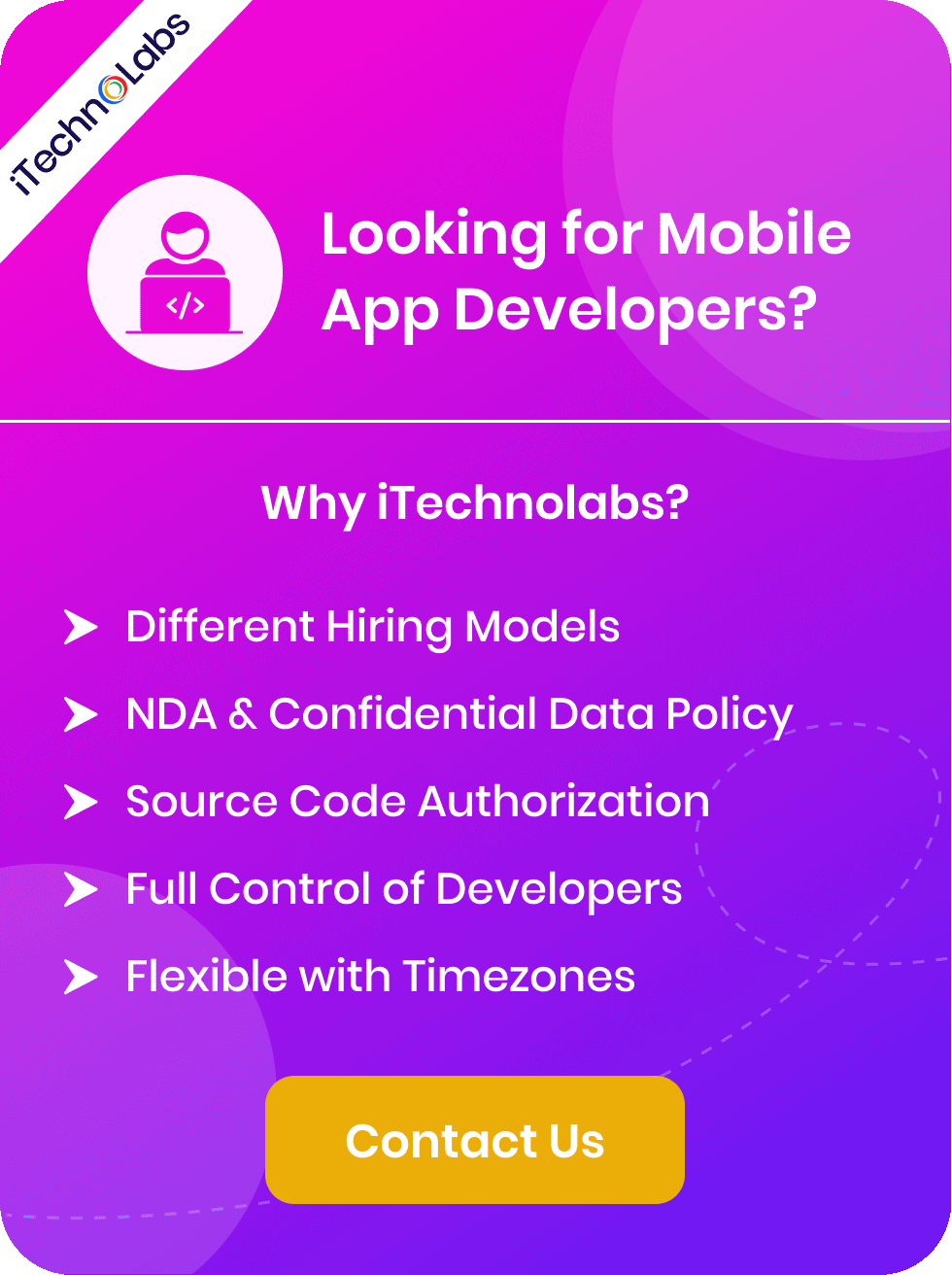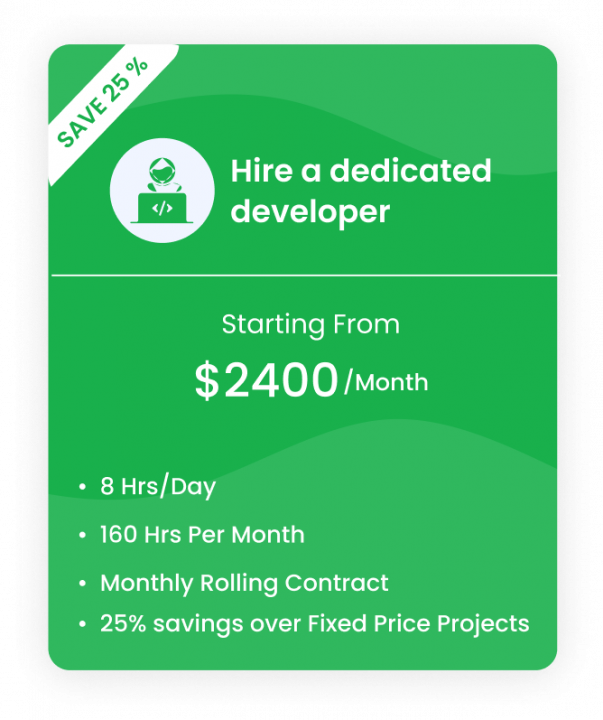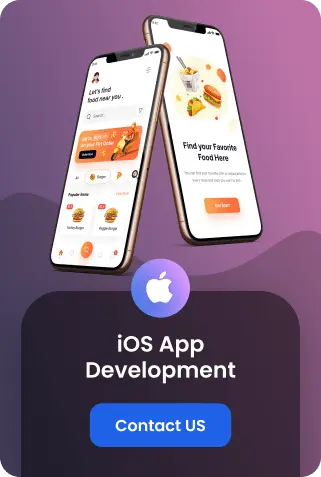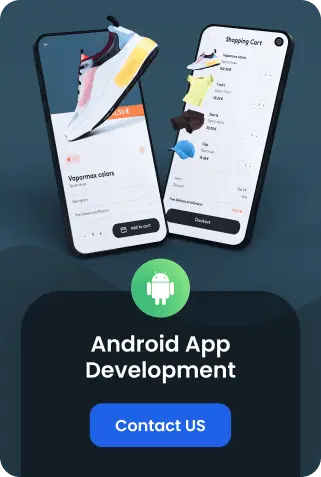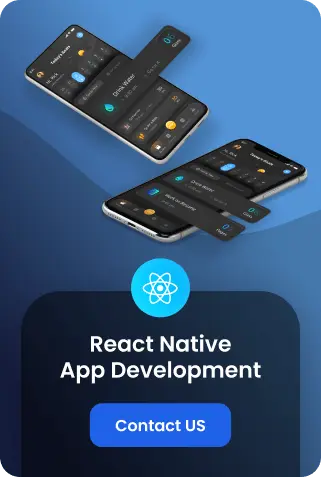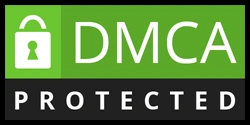As technology continues to evolve at an unprecedented rate, the field of healthcare web application development is experiencing a surge in popularity. This is largely driven by the escalating demand for telehealth services and the growing emphasis on digital patient care, which underscore the critical importance of healthcare organizations to bolster their online presence.
In this comprehensive guide, we will delve into the intricate steps, evaluate the potential costs, and outline the expected timelines involved in the development of a healthcare web application in the year 2024. Whether you represent a small local clinic or are part of a sprawling hospital network, this guide aims to equip you with in-depth insights and tailored recommendations to navigate your web development journey successfully.
We’ll start by examining the initial stages of planning and design, where we’ll emphasize the importance of understanding user needs and ensuring compliance with healthcare regulations. Following this, we’ll discuss the development phase, highlighting key considerations for selecting the right technologies and ensuring data security. Moreover, we’ll explore post-launch strategies, including user feedback collection and continuous improvement practices, to ensure that your web application remains relevant and effective in delivering quality patient care.
By providing a detailed roadmap and shedding light on the common pitfalls to avoid, this guide seeks to be an invaluable resource for healthcare providers looking to make a meaningful impact in the digital landscape.
What is a Healthcare Web Application?
A healthcare web application is a sophisticated software solution meticulously crafted for the unique needs of the healthcare industry. It empowers healthcare organizations to offer a wide array of services to patients via an online platform. This includes functionalities such as scheduling appointments, accessing patient medical records, and enabling virtual consultations, among others.
The rising popularity of these applications can be attributed to their unparalleled convenience and the ease of access they provide to patients, allowing them to manage their healthcare needs from the comfort of their homes. For healthcare providers, these applications are a boon, streamlining administrative and clinical processes, enhancing the efficiency of operations, and facilitating the provision of high-quality care. This, in turn, significantly improves patient outcomes and satisfaction levels.
Moreover, healthcare web applications incorporate advanced security measures to protect sensitive patient data, ensuring compliance with healthcare regulations and maintaining patients’ trust. By integrating the latest technology trends, such as artificial intelligence and machine learning, these applications are continuously evolving, further revolutionizing patient care and healthcare management.
In essence, healthcare web applications represent a critical evolution in the way healthcare services are delivered and received, marking a significant shift towards more accessible, efficient, and patient-centered care.
What is the Market Scope of the Healthcare Industry?
The healthcare industry is one of the largest and fastest-growing industries globally, with a market size projected to reach over $11 trillion by 2025. This growth can be attributed to various factors such as an aging population, increasing prevalence of chronic diseases, advancements in medical technology, and rising demand for quality healthcare services.
With the increasing use of digital technologies in various industries, the healthcare sector has also witnessed a surge in digital transformation, with the emergence of telemedicine, electronic health records, and healthcare web applications. This market scope for digital solutions in healthcare is projected to continue growing as more organizations and practitioners recognize the benefits and potential of these technologies.
Also Read: How AI Can Be Useful In A Healthcare App To Provide The Next-Level Diagnosis?
7 Simple Steps to Develop Healthcare Web Application
Developing a healthcare web application may seem like a complex and daunting task, but following these seven simple steps can help streamline the process and ensure a successful outcome:
Identify a Problem, Gather Requirements, and Perform Market Research
The first step in developing a healthcare web application is to identify a problem or gap in the market that your application can address. This could be an existing issue in the healthcare industry, such as patient scheduling inefficiencies or difficulties accessing medical records.
Once you have identified the problem, gather requirements from potential users and conduct thorough market research to understand the needs and preferences of your target audience. This will help ensure that your web application addresses a real need and has a market demand.
Hire a Healthcare Website Development Company
Securing a professional and experienced team of developers is essential for ensuring the success of your healthcare web application. To achieve this, it’s important to engage a reputable healthcare website development company, one that boasts a proven track record in crafting secure, user-friendly applications tailored to the unique needs of the healthcare industry. Such a company will not only understand the nuances of healthcare regulations but also incorporate the latest technological advancements to enhance user experience and data security.
Wireframing and UI/UX Design of Your Healthcare Web Application
The next step in the development process is to meticulously create a wireframe or a detailed visual representation of your application’s interface. This critical step involves laying out each element of your web application’s design, which serves as a blueprint. By doing this, it becomes significantly easier to visualize the overall layout and design, enabling you to identify and address any potential issues or user experience roadblocks before the coding phase begins. It’s a proactive measure to ensure that development proceeds smoothly.
Once the wireframe is thoroughly reviewed and finalized, your focus should shift toward crafting a user-friendly and aesthetically pleasing UI/UX design. This phase is all about enhancing user engagement through attractive visuals and intuitive navigation. It’s crucial to consider the specific needs and preferences of your target audience during this stage, tailoring the design to meet their expectations and improve their interaction with your application. Additionally, staying informed about any regulations or industry standards that may influence your design choices is vital. This ensures not only a seamless user experience but also compliance with legal and ethical guidelines.
Incorporating feedback from potential users at this stage can also be invaluable. Consider running usability tests or focus groups to gather insights that can refine your UI/UX design further. This user-centric approach will help in creating an interface that not only looks good but also feels intuitive and welcoming to your audience, ultimately driving higher user retention and satisfaction.
Development of Healthcare Web Application
With the increasing reliance on technology and digital solutions in the healthcare industry, developing a web application for this field has become more important than ever. A healthcare web application can provide numerous benefits, such as easy access to medical information, appointment scheduling, online consultations, and remote monitoring of patients.
HIPAA Compliance Integration Into Your Web App
When developing a healthcare web application, it is crucial to ensure that it complies with the Health Insurance Portability and Accountability Act (HIPAA). This federal law sets the standards for protecting sensitive patient data, including electronic medical records. Failure to comply with HIPAA can result in severe penalties and damage to your reputation.
To integrate HIPAA compliance into your web app, you must implement technical safeguards, such as encryption and secure transmission of data. You should also have strict policies and procedures in place for handling patient information, including access control and regular audits.
Read More: 10 Best Healthcare Apps for iPhone and Android Devices
Testing of Healthcare Web App
As with any software development process, testing is a crucial step in ensuring the functionality and reliability of your healthcare web application. When it comes to healthcare, the stakes are even higher, as any errors or bugs could potentially harm patients or compromise their sensitive information.
Therefore, comprehensive testing should be conducted at every stage of the development process. This includes unit testing, integration testing, and end-to-end testing. You should also consider incorporating user feedback and usability testing to ensure that your web app meets the needs of both healthcare professionals and patients.
Deployment of Healthcare Web Application
The deployment of a healthcare web application demands meticulous planning and thorough consideration to address several critical factors. Firstly, it is imperative to ensure that your web application is hosted on a server that prioritizes security to protect sensitive healthcare data. Additionally, the configuration of your web application must strictly adhere to HIPAA (Health Insurance Portability and Accountability Act) regulations. This involves a multi-layered security approach, including the implementation of robust firewalls to ward off cyber threats, advanced intrusion detection systems to monitor and alert on suspicious activities, and stringent access controls to ensure that only authorized personnel can access certain levels of data. Taking these precautions is essential in maintaining the integrity and confidentiality of patient information and ensuring the successful deployment of a healthcare web application.
How Much Does It Cost to Develop a Healthcare Web Application?
The cost of developing a healthcare web application can vary widely depending on several factors, including the complexity of the app, the features it will include, the level of security required, and the development team you choose. Basic healthcare web applications can start from as low as $20,000 to $40,000. However, for applications with advanced features such as real-time communication, complex data analysis, and integration with other healthcare systems, costs can escalate to $100,000 or even higher. It’s also crucial to factor in ongoing costs for maintenance, updates, and compliance with healthcare regulations which can add 15-20% per year to the initial development cost. Choosing the right development partner and carefully planning your application features can help manage these expenses effectively.
Cost Based on Complexity of Healthcare Web App
| Complexity Level | Estimated Development Cost | Features |
| Basic | $20,000 – $40,000 | Patient Registration – Appointment Scheduling – Basic Electronic Health Records |
| Moderate | $40,000 – $80,000 | Telemedicine Capabilities – Payment Processing – Secure Messaging |
| Advanced | $80,000 – $150,000+ | Real-time Communication – Complex Data Analysis – Integration with existing healthcare systems |
Cost Based on the Location of Developers You Hire
| Location | Average Cost Per Hour | Note |
| North America (US/Canada) | $100 – $180 | High-quality standards, but at a premium cost. |
| Western Europe | $70 – $150 | Offers a good balance between cost and quality. |
| Eastern Europe | $40 – $100 | Cost-effective without significantly compromising on quality. |
| Asia (India/Philippines) | $20 – $50 | Most affordable, but can vary in quality. Recommended for less complex projects |
| Latin America | $30 – $70 | Emerging as a cost-effective region with growing expertise in healthcare software development |
Suggested: How Much Does it Cost to Create An App
How Much Time Does It Take to Develop a Healthcare Web Application?
The time it takes to develop a healthcare web application can vary depending on the complexity of the project, the experience and expertise of the development team, and the chosen development approach. Generally, basic electronic health record systems can take around 3-6 months to develop, while more advanced systems with complex features and integrations can take up to 1 year or more.
Some factors that can affect the development timeline include:
- Planning and Requirements Gathering: This stage involves understanding the client’s needs, gathering requirements, and creating a project plan. It can take anywhere from 2-4 weeks depending on the scope of the project.
- Design and Prototyping: The design process includes creating wireframes, mockups, and prototypes to visualize the user interface and user experience. This phase can take 4-6 weeks.
- Development: The actual coding and development of the application can take anywhere from 3-8 months, depending on the complexity of features and integrations.
- Testing and Quality Assurance: This stage involves testing the application for bugs, and errors, and ensuring it meets the required standards. It can take 2-4 weeks.
- Deployment and Maintenance: Once the application is developed and tested, it needs to be deployed to a server and maintained. Ongoing maintenance can take anywhere from 2-6 months, depending on the size of the development team and any updates or enhancements needed.
Technology Stack Used to Develop a Healthcare Web Application
The technology stack used to develop a healthcare web application can also impact the overall development timeline. Some commonly used technologies for healthcare applications include:
- Programming Languages: The choice of programming language can affect the speed and efficiency of development. Popular languages for healthcare apps include Java, C#, Python, and JavaScript.
- Frameworks and Libraries: These are pre-written code bundles that developers can use to speed up the development process. Some commonly used frameworks for healthcare apps include React, Angular, and Vue.
- Database Management Systems: Healthcare applications often require storing and managing large amounts of data. Popular database management systems used in healthcare apps include MySQL, MongoDB, and Oracle.
- Cloud Services: Cloud services like Amazon Web Services (AWS), Microsoft Azure, and Google Cloud Platform can be used for hosting, storage, and other infrastructure needs of the application.
- APIs: Application Programming Interfaces (APIs) allow different systems to communicate with each other. In healthcare apps, APIs are commonly used to integrate electronic health records or medical devices.
- Security Measures: Healthcare applications need to comply with strict security regulations to protect sensitive patient data. Implementing secure coding practices and using encryption methods can impact the development timeline.
Advanced Features to Implement in Healthcare Web Development
In addition to the basic features mentioned earlier, some advanced functionalities can enhance the quality and user experience of a healthcare web application. Some of these include:
- Virtual Consultations: With telemedicine gaining popularity, integrating virtual consultation capabilities into the app can be beneficial for both patients and healthcare providers.
- Personalized Health Monitoring: Using data from wearable devices or self-reported information, the app can provide personalized health monitoring and recommendations to patients.
- Artificial Intelligence (AI): AI algorithms can be used in healthcare apps for tasks such as medical diagnosis, predicting disease progression, or identifying potential drug interactions.
- Blockchain Technology: By using blockchain technology, healthcare apps can ensure secure data sharing between different parties while maintaining privacy and transparency.
- Machine Learning (ML): ML algorithms can be used to analyze large sets of patient data and identify patterns that can aid in disease diagnosis, treatment planning, and population health management.
- Chatbots: Incorporating chatbot technology into healthcare apps can provide patients with 24/7 support for basic medical inquiries or appointment scheduling.
- Gamification: Adding gamified elements to the app can motivate users to engage in healthy behaviors and track their progress.
- Voice Recognition: By utilizing voice recognition technology, patients can easily access information or perform tasks on the app hands-free, making it more user-friendly for individuals with limited mobility.
6 Top Examples of Successful Healthcare Web Apps
MyChart
MyChart is a healthcare web app developed by Epic Systems Corporation that allows patients to access their medical records, schedule appointments, and communicate with their healthcare providers. It also offers features such as prescription refill requests and bill pay. With over 170 million users worldwide, MyChart has become a leading example of how healthcare web apps can improve patient engagement and streamline healthcare processes.
HealthTap
HealthTap is a telehealth platform that connects patients with doctors for virtual consultations and medical advice. The app uses AI technology to match patients with the most suitable doctors for their specific needs. It also offers features such as a symptom checker, medication reminders, and health tracking. With over 6 million users worldwide, HealthTap has revolutionized the way people receive healthcare services.
Ada
Ada is a symptom checker app that uses AI technology to assess a user’s symptoms and provide potential diagnoses and recommendations for the next steps. The app also offers personalized health plans, medication reminders, and access to virtual consultations with doctors. It has been praised for its accuracy and ease of use, with over 9 million users worldwide.
Medisafe
Medisafe is a medication management app that helps patients keep track of their medications, set reminders for doses, and refill prescriptions. It also offers features such as drug-to-drug interaction alerts and personalized health reports for users to share with their healthcare providers. With over 7 million users worldwide, Medisafe has become a valuable tool for patients managing chronic conditions and complex medication regimens.
Zocdoc
Zocdoc is a healthcare scheduling app that allows users to find and book appointments with doctors, dentists, and other healthcare providers in their area. The app also offers reviews from verified patients, insurance information, and virtual consultations. With over 6 million users worldwide, Zocdoc has made it easier for patients to find and access quality healthcare services.
MyFitnessPal
MyFitnessPal is a popular health and fitness app that helps users track their diet, exercise, and weight loss goals. It offers a database of over 11 million foods to log meals, a barcode scanner for easy tracking, and personalized recommendations based on user’s preferences and goals. With over 80 million users worldwide, MyFitnessPal has become a go-to app for those looking to improve their overall health and wellness.
10 Different Types of Healthcare Web Applications
In addition to the apps mentioned above, several other types of healthcare web applications serve different purposes and provide various benefits to users. Here are 10 examples of different types of healthcare web applications:
| Type | Description |
| Electronic Health Records (EHR) Systems | Web applications that store patient health records digitally, enhance access and sharing of medical information among healthcare providers. |
| Telemedicine Platforms | Platforms that enable remote consultations, diagnoses, and treatment advice through video conferencing, increasing access to healthcare services |
| Appointment Scheduling Systems | Online systems that allow patients to book, reschedule, or cancel appointments with healthcare providers, improving convenience and reducing wait times |
| Prescription Management Apps | Applications are designed to help patients manage their medication schedules, set reminders, and request refills electronically. |
| Patient Portals | Secure online websites that give patients 24-hour access to personal health information, lab results, and direct communication with healthcare providers |
| Health Information Exchanges (HIE) | Platforms that facilitate the secure exchange of health information among different healthcare institutions and providers, ensuring continuity of care |
| Medical Billing and Coding Applications | Web applications that streamline the process of billing insurance and coding medical procedures, reducing errors and improving financial operations |
| Clinical Decision Support Systems (CDSS) | Tools that provide healthcare professionals with patient-specific assessments or recommendations to aid in clinical decision-making |
| Health and Wellness Tracking Apps | Applications that allow users to monitor various health metrics, such as physical activity, diet, sleep patterns, and more, promoting a healthier lifestyle |
| Remote Patient Monitoring (RPM) Systems | Systems that enable monitoring of patient’s health data outside of traditional clinical settings through connected devices, improving chronic disease management and patient outcomes |
Reliable Platforms to Find Developers for Healthcare Web App Development
| Platform | Description | Why It’s Suitable for Healthcare Web App Development |
| Upwork | A freelancing platform that connects clients with professionals from various fields, including web and app development. | Upwork features a wide range of developers with specific experience in healthcare applications, enabling clients to review portfolios and hire based on project needs and expertise |
| A professional networking site that also serves as a platform for posting and finding job opportunities | LinkedIn allows for the vetting of potential candidates through professional networks, endorsements, and recommendations, particularly beneficial for finding developers with a proven track record in healthcare projects | |
| GitHub | A platform for version control and collaboration that hosts a large community of developers | GitHub is ideal for discovering developers who have contributed to healthcare projects or have relevant repositories showcasing their abilities in developing compliant and secure healthcare applications. |
| Toptal | A selective network of the top freelance software developers, designers, and finance experts | Toptal pre-vet their developers, ensuring only those with exceptional skills and experience in healthcare applications are available for hire, which significantly reduces the hiring risk |
| Stack Overflow Jobs | A job board section of the popular Stack Overflow community, focused on developers and technologists. | This platform is rich with active developers knowledgeable in the latest technologies and with potential experience in healthcare solutions, allowing for targeted job postings. |
How iTechnolabs Help you with Healthcare Web Development
At iTechnolabs, we understand the importance of having a highly skilled and experienced team when it comes to healthcare web development. That’s why we make sure to source our developers from a variety of platforms, such as Upwork, LinkedIn, GitHub, Toptal, and Stack Overflow Jobs.
Our vetting process is rigorous, ensuring that only the top-tier developers with relevant healthcare experience and knowledge are selected for our team. This allows us to provide our clients with the best possible talent for their projects, reducing the risk of hiring inexperienced or unqualified developers.
In addition to having a team of skilled developers, we also offer specialized services in healthcare web development. Our team has experience in developing HIPAA-compliant applications and adhering to other regulatory standards in the healthcare industry. We understand the complexity and sensitivity of healthcare data, and we make sure to prioritize security and privacy in all our projects.
We also keep ourselves updated with the latest technologies and trends in the healthcare industry, allowing us to create innovative solutions for our clients. Our expertise includes creating telemedicine platforms, patient portals, electronic health records systems, and more.
In addition to our team and specialized services, iTechnolabs also offers a range of benefits for our clients in the healthcare industry. These benefits include cost-effective solutions, efficient project management, and timely delivery.
We understand that healthcare organizations need to minimize costs while still maintaining high-quality services. That’s why we offer flexible pricing models and customizable solutions, ensuring that you only pay for the services you need. Our team also follows agile methodology, allowing us to deliver projects efficiently and on time.
- Specialized Expertise in Healthcare: At iTechnolabs, we pride ourselves on having a dedicated team of developers who possess specialized skills in healthcare web development. Our team is thoroughly familiar with HIPAA regulations and adheres to other critical industry standards, ensuring that your projects are not only innovative but also compliant.
- Customizable Solutions: Understanding that each healthcare organization has its own set of unique challenges and requirements, we offer tailor-made solutions. We take the time to understand your specific needs, guaranteeing that the web application we develop for you aligns seamlessly with your operational goals and enhances your service delivery.
- Cutting-Edge Technology: We are committed to leveraging the latest technologies and staying abreast of current trends in the healthcare industry. This commitment ensures that your application is not just modern but also future-ready. We specialize in developing telemedicine platforms, patient portals, electronic health records (EHR) systems, and more, using advanced technologies that provide your organization with a competitive edge.
- Security and Privacy Prioritized: Recognizing the critical importance of data security and privacy in the healthcare sector, our development process is meticulously designed. We prioritize the highest levels of security and privacy protections, implementing robust measures to safeguard sensitive healthcare data against breaches and unauthorized access.
- Cost-Effective: We strive to provide our clients with high-quality services that are both effective and affordable. By offering flexible pricing models and crafting customizable solutions, we ensure that our clients receive the best possible services within their budget constraints. Our goal is to deliver value without compromising on quality or functionality.
- Agile Project Management: Our project management approach is rooted in agile methodologies. This approach enables us to manage projects efficiently, adapt to changes swiftly, and maintain open communication with our clients. By being agile, we ensure that projects progress smoothly, meet all milestones, and are delivered on time.
- Scalable Solutions: At iTechnolabs, we understand that healthcare organizations grow and evolve. That’s why we build web applications with scalability at their core. Our solutions are designed to accommodate growth, allowing for easy updates and enhancements. This ensures that your application can evolve alongside your organization and the ever-changing technology landscape, providing lasting value.
Important: A Comprehensive Guide To Develop A Healthcare Mobile App
Are you looking for healthcare web application services?
Choosing iTechnolabs for your healthcare web application development delivers multifaceted benefits. Our emphasis on Security and Privacy ensures that your application adheres to the strictest data protection policies, crucial for maintaining patient confidentiality and compliance with healthcare regulations. Our Cost-Effective solutions mean you don’t have to compromise on quality due to budget constraints; we offer the best value for your investment. With Agile Project Management, expect your project to be handled with utmost efficiency and flexibility, accommodating changes swiftly and ensuring timely delivery. Furthermore, the Scalable Solutions we create are not just for solving present needs but are designed to grow with your organization, guaranteeing long-term utility and adaptability. In conclusion, iTechnolabs stands as a formidable ally in crafting healthcare web applications that are secure, affordable, efficiently managed, and scalable, positioning your healthcare organization for success and innovation.
- Dedicated Expertise in Healthcare: iTechnolabs boasts a team profoundly knowledgeable about the healthcare sector, ensuring your web application is built with precision and an understanding of industry requirements.
- Customized Solutions: Understanding that each healthcare organization has unique needs, iTechnolabs specializes in crafting bespoke web applications tailored to meet those specific requirements, offering a truly personalized service.
- Advanced Security Measures: With unparalleled attention to security, iTechnolabs ensures your healthcare web application is fortified with the latest security protocols, safeguarding sensitive patient data against cyber threats.
- Integration Capabilities: Our web applications are designed for seamless integration with existing healthcare systems and third-party services, facilitating a cohesive ecosystem that enhances operational efficiency.
- User-Friendly Design: Prioritizing the user experience, iTechnolabs creates web applications that are not only intuitive for patients to use but also streamline processes for healthcare providers, improving overall productivity and patient care.
- Ongoing Support and Maintenance: iTechnolabs doesn’t just build your application and step away. We provide continuous support and maintenance, ensuring that your web application remains robust and up-to-date with the latest technological advancements.
Conclusion:
With iTechnolabs as your partner, you can trust that your healthcare organization will have a cutting-edge web application tailored to your specific needs, with advanced security measures and seamless integration capabilities. Our team of experts will provide ongoing support and maintenance, ensuring the success and innovation of your organization. Contact us today to take the first step towards digital transformation in healthcare. So, it is clear that iTechnolabs is committed to delivering exceptional healthcare web applications that enhance patient care and improve operational efficiency.
Frequently Asked Questions on Healthcare Web Application Development
How can a healthcare web application benefit medical business?
A healthcare web application can benefit medical businesses in numerous ways, including:
- Streamlining processes: A well-designed web application can automate various tasks and streamline processes, making them more efficient and less time-consuming.
- Improved patient care: With features such as online appointment scheduling, virtual consultations, and access to medical records, a web application can enhance the overall patient experience and improve the quality of care.
- Cost savings: By automating tasks and reducing paperwork, a web application can help medical businesses reduce costs associated with administrative work.
How does medical website design differ from standard web design for other industries in medical web app development?
Medical website design requires a different approach compared to standard web design for other industries. Some key considerations for medical website design include:
- Compliance with healthcare regulations: Medical websites must comply with strict regulations such as HIPAA in the US and GDPR in Europe to protect patient data. This requires careful planning and implementation of security measures.
- User experience: Medical web applications should be user-friendly, easy to navigate, and visually appealing to ensure a positive experience for patients.
- Accessibility: Medical websites must be accessible to individuals with disabilities, as mandated by laws such as the Americans with Disabilities Act (ADA) in the US.
What are the key considerations when choosing a developer for medical web development or medical software projects?
When choosing a developer for medical web development or medical software projects, it is important to consider the following factors:
- Experience and expertise: The developer should have experience in developing medical web applications and knowledge of healthcare regulations.
- Security measures: The developer should have a strong understanding of security protocols and be able to implement them effectively to protect patient data.
- Compliance with regulations: The developer should have a thorough understanding of healthcare regulations and be able to ensure compliance throughout the development process.
- Client reviews and testimonials: It is important to research and read client reviews and testimonials to gauge the developer’s track record and reputation in the industry.
- Support and maintenance: A good developer should offer ongoing support and maintenance services to ensure the smooth functioning of the medical web application.
How do healthcare web applications improve patient engagement?
Healthcare web applications can improve patient engagement in the following ways:
- Access to information: With a medical web application, patients can easily access important information about their health, such as lab results, medication lists, and appointment schedules. This allows them to take an active role in managing their own healthcare.
- Communication with healthcare providers: Medical web applications often include features that allow patients to communicate with their healthcare providers, such as secure messaging and telehealth services. This improves communication and collaboration between patients and providers.
- Appointment booking and reminders: Many medical web applications allow patients to book appointments online and receive reminders via email or text. This simplifies the appointment scheduling process and reduces the likelihood of missed appointments.
- Personalized care plans: With a medical web application, healthcare providers can create personalized care plans for their patients. This not only improves patient engagement but also leads to better health outcomes.
- Health tracking: Some medical web applications have features that allow patients to track their health data, such as blood pressure, glucose levels, and exercise habits. This can help patients stay accountable and make informed decisions about their health.


